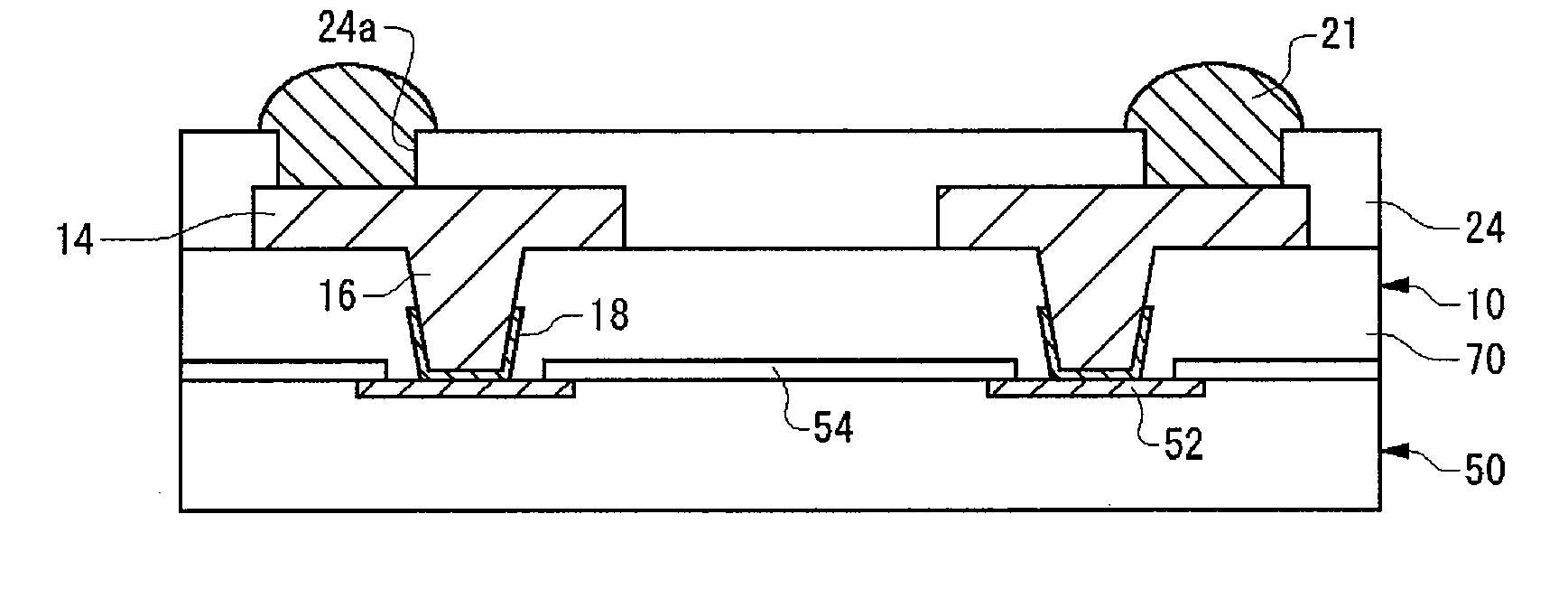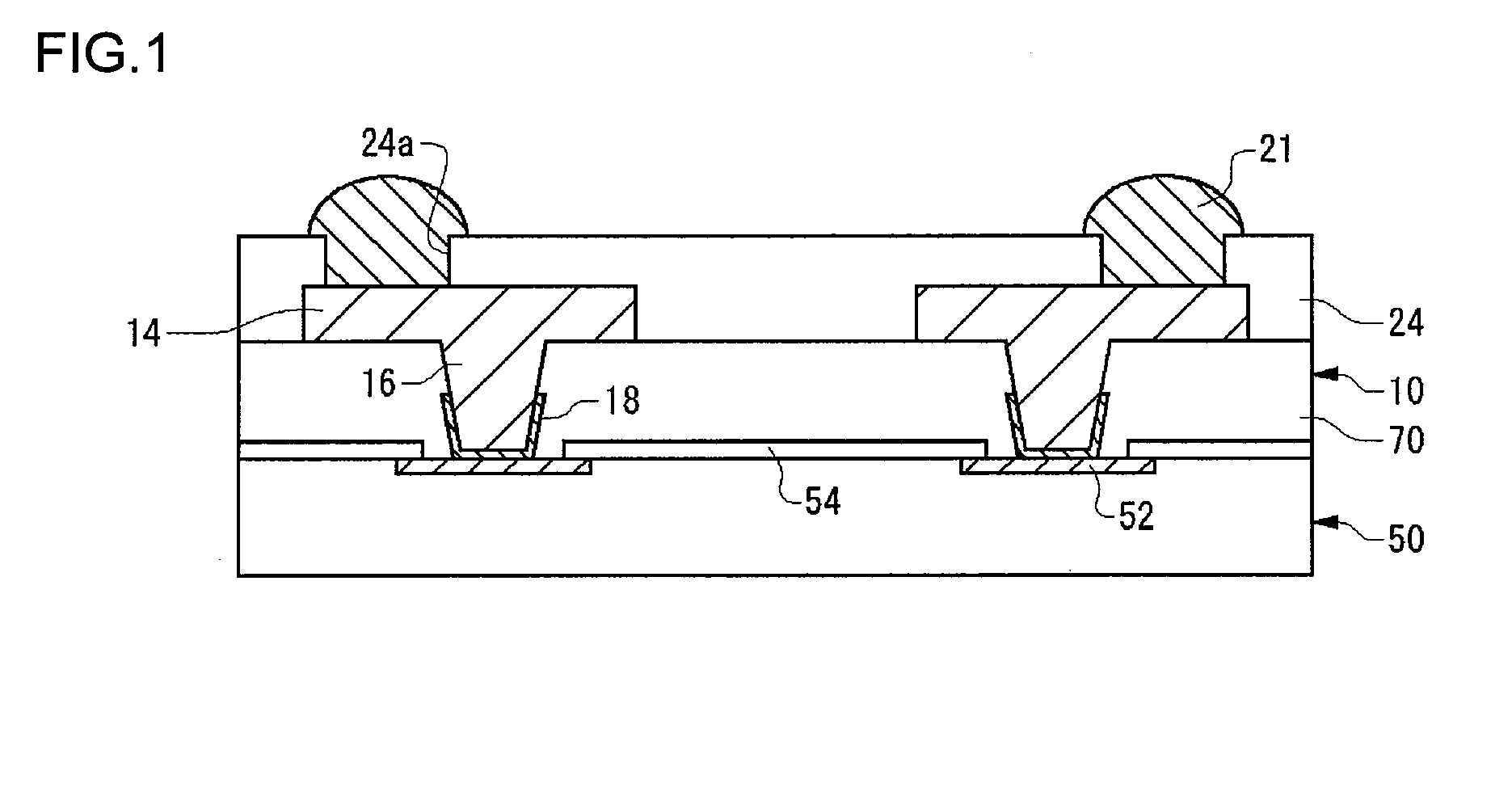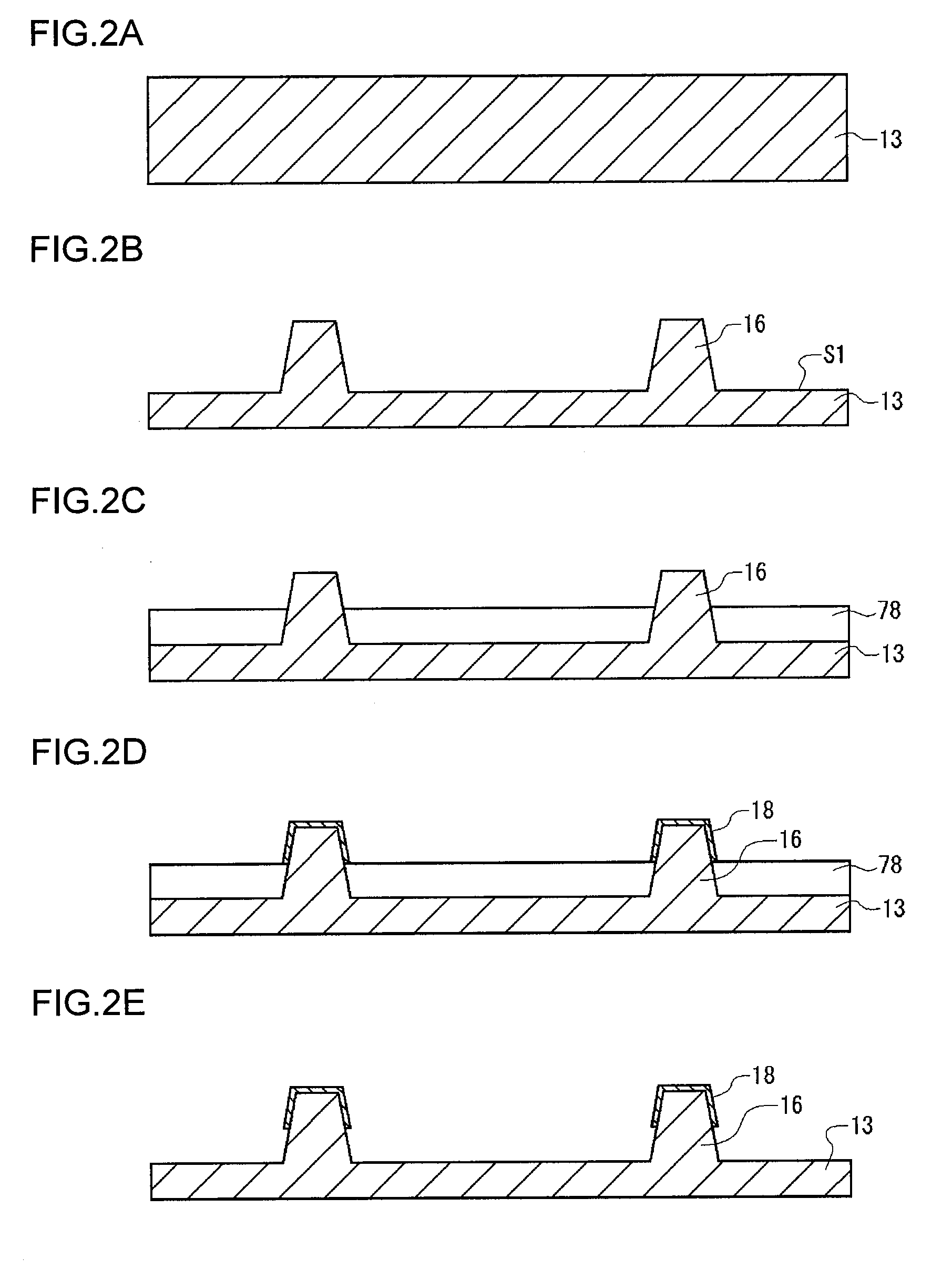Board adapted to mount an electronic device, semiconductor module and manufacturing method therefore, and portable device
- Summary
- Abstract
- Description
- Claims
- Application Information
AI Technical Summary
Benefits of technology
Problems solved by technology
Method used
Image
Examples
first embodiment
[0056]FIG. 1 is a schematic cross-sectional view illustrating a structure of a board adapted to mount an electronic device 10 according to first embodiment of the present invention and that of a semiconductor module 30 using said board 10. The semiconductor module 30 is comprised of a board adapted to mount an electronic device 10 and a semiconductor device 50 mounted on the board 10. It is to be noted that in the embodiments described hereinbelow, a “board adapted to mount an electronic device 10” is referred to as “packaging board 10” or simply as “board 10” also.
[0057]The board 10 includes an insulating resin layer 70, a wiring layer 14 provided on one face of the insulating resin layer 70, a bump electrode 16 provided on a surface of the wiring layer 14 on an insulating resin layer 70 side thereof, and a covering 18 which covers or coats a top surface of the bump electrode 16 and a region, at a side surface thereof, continuous with the top surface thereof excluding a region in c...
second embodiment
[0089]In the above-described first embodiment, the insulating resin layer 70 is held and press-formed between the copper sheet 13 and the semiconductor device 50 and thereby the semiconductor device 50, the insulating resin layer 70 and the copper sheet 13 are united into one body so as to form the semiconductor module 30. The semiconductor module 30 may also be formed as follows. Note that the other components in the semiconductor module 30, the method for manufacturing the bump electrodes 16 and the coverings 18, and the like are basically the same as those in the first embodiment and therefore the description thereof is omitted as appropriate.
[0090]FIGS. 7A to 7D are cross-sectional views showing a process in a method for manufacturing the semiconductor module 30 according to the second embodiment.
[0091]As shown in FIG. 7A, the above-described epoxy thermosetting resin 71 is stacked on the main surface S1 of one face of the copper sheet 13.
[0092]Then, as shown in FIG. 7B, a cover...
third embodiment
[0096]Though the semiconductor module 30 is formed using a so-called pasting process in the above-described first embodiment, the semiconductor module 30 may be formed using a so-called buildup process as will be shown in the following third embodiment. Note that description of the other components similar to those of the first embodiment is omitted as appropriate.
[0097]FIGS. 8A to 8F and FIGS. 9A to 9C are cross-sectional views showing a process in a method for manufacturing a semiconductor module 30 according to the third embodiment.
[0098]As shown in FIG. 8A, a semiconductor device 50 in which an element electrode 52 of a predetermined pattern is formed is prepared.
[0099]Then, as shown in FIG. 8B, a resin layer 72 is stacked on a protective layer 54 of a semiconductor device 50. The resin layer 72 may be formed as follows. That is, the above-described epoxy thermosetting resin is laminated on the entire surface of the element electrode 52 side of the semiconductor device 50; the r...
PUM
 Login to View More
Login to View More Abstract
Description
Claims
Application Information
 Login to View More
Login to View More - R&D
- Intellectual Property
- Life Sciences
- Materials
- Tech Scout
- Unparalleled Data Quality
- Higher Quality Content
- 60% Fewer Hallucinations
Browse by: Latest US Patents, China's latest patents, Technical Efficacy Thesaurus, Application Domain, Technology Topic, Popular Technical Reports.
© 2025 PatSnap. All rights reserved.Legal|Privacy policy|Modern Slavery Act Transparency Statement|Sitemap|About US| Contact US: help@patsnap.com



